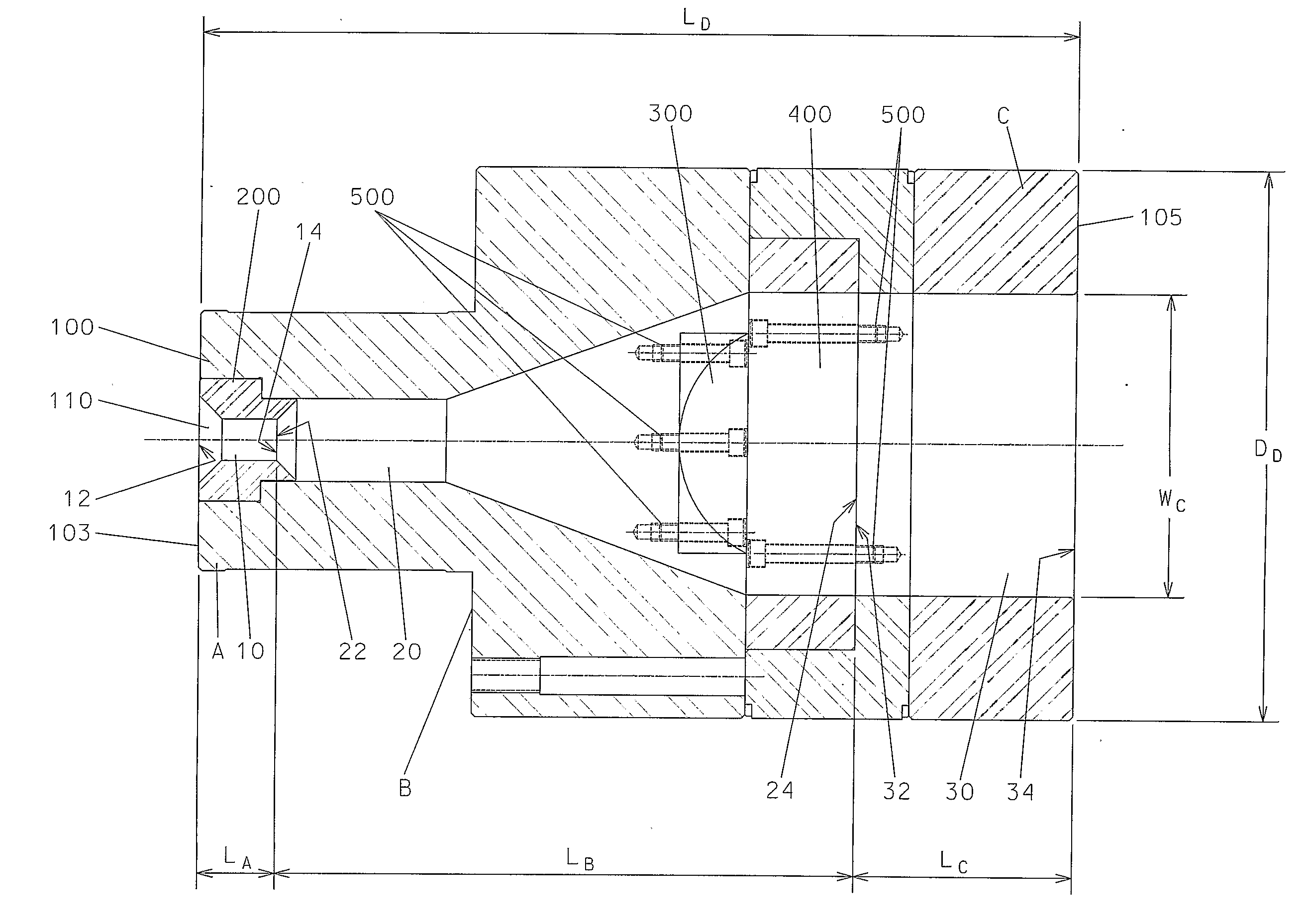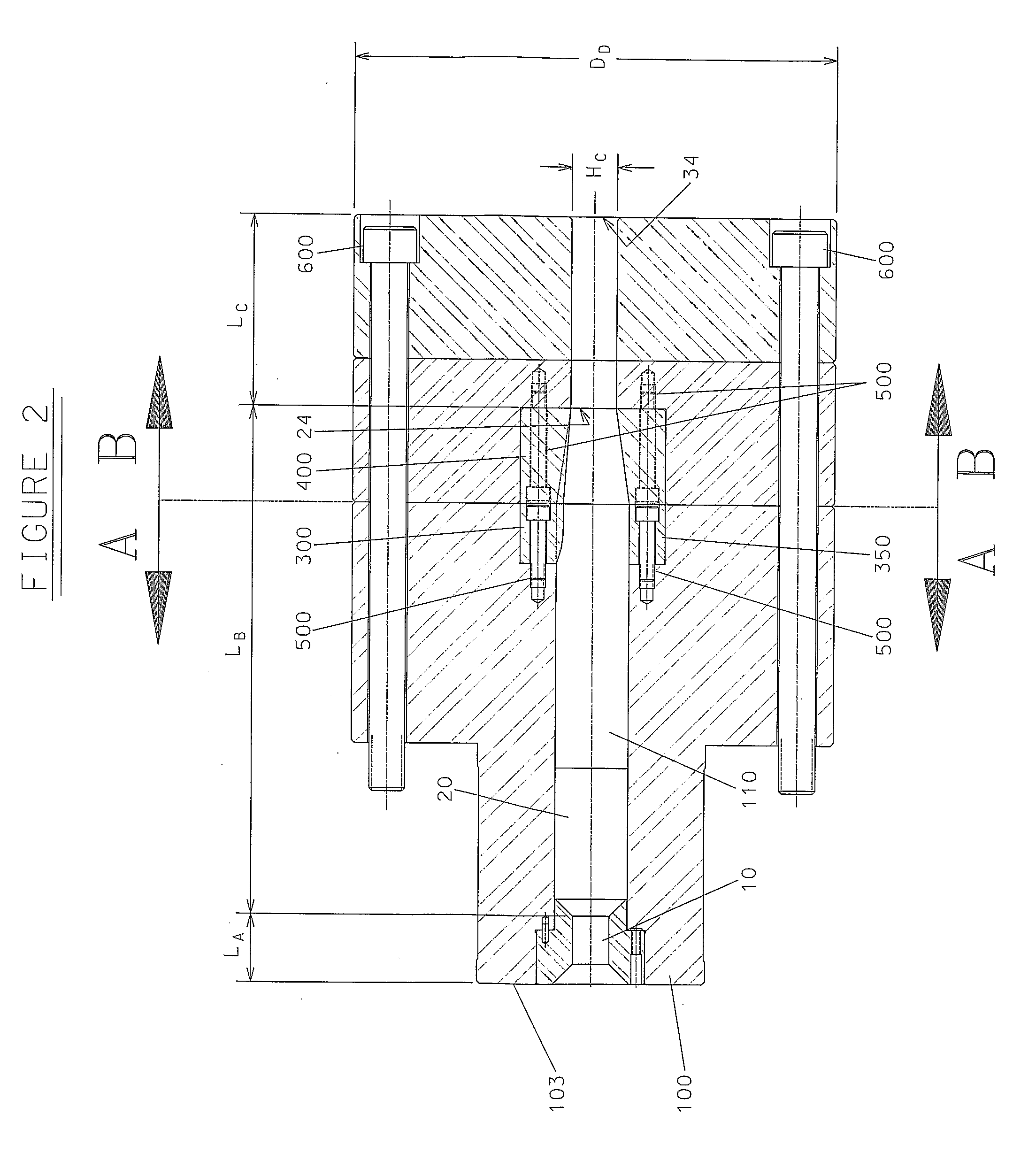Extrusion Die and Process for Producing an Extruded Filled Polymer Composition
- Summary
- Abstract
- Description
- Claims
- Application Information
AI Technical Summary
Benefits of technology
Problems solved by technology
Method used
Image
Examples
example 1
[0073]The die has a length LD of 16 inches (406 mm) and a diameter at its exit end of 10 inches (254 mm). The length LA of the Flow Restriction Zone A is 1.4 inches (3.6 cm) The length LB of Flow Redistribution Zone B is 10.6 inches (26.9 cm) The length LC of Land Zone C is 4 inches (10 cm).
[0074]The die has an entrance orifice 12 that is 1.57 inches (40 mm) in diameter. Exit orifice 14 has a diameter of 0.75 inches (19 mm). Redistributive Flow Channel 20 symmetrically flares to a diameter of 1.5 inches (38 mm) before becoming rectangular. Land Channel 30 has a width, WC, of 5.50 inches (140 mm) and a height, HC, of 0.94 inches (24 mm). Elements 300 and 310 reduce the height of Redistributive Flow Channel 20 and are 3.3 inches (8.4 cm) long. Elements 300 and 400 protrude into Redistributive Flow Channel 20 with a symmetrical bulge (half dog-bone profile) centered across the Channel's width and having a maximum protrusion corresponding to a 4 inch (10 cm) wide portion of a 14.5 inch ...
example 2
[0078]Prepare Example 2 using the formulation and process of Example 1, except use an Element 200 in the die that is longer and defines a larger Restrictive Flow Channel than in the die of Example 1. The different Element 200 modifies the die so that the length LA of the Flow Restriction Zone A is 5 inches (13 cm), the length LB of Flow Redistribution Zone B is 7 inches (18 cm) and the Restrictive Flow Zone exit orifice 14 has a diameter of one inch (25 mm).
[0079]The die and process of Example 2 create a board similar to that of Example 1. The die of Example 2 is an example of the die of the present invention and the process of Example 2 is an example of the process of the present invention.
PUM
| Property | Measurement | Unit |
|---|---|---|
| Fraction | aaaaa | aaaaa |
| Length | aaaaa | aaaaa |
| Length | aaaaa | aaaaa |
Abstract
Description
Claims
Application Information
 Login to View More
Login to View More - R&D
- Intellectual Property
- Life Sciences
- Materials
- Tech Scout
- Unparalleled Data Quality
- Higher Quality Content
- 60% Fewer Hallucinations
Browse by: Latest US Patents, China's latest patents, Technical Efficacy Thesaurus, Application Domain, Technology Topic, Popular Technical Reports.
© 2025 PatSnap. All rights reserved.Legal|Privacy policy|Modern Slavery Act Transparency Statement|Sitemap|About US| Contact US: help@patsnap.com



